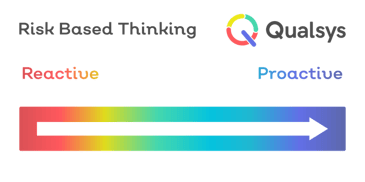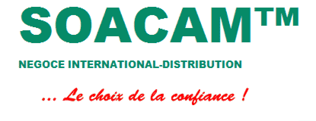Want to contribute to this article?
The governance, risk and compliance blog published by Qualsys is accessed by tens of thousands of quality professionals from across the globe each month.
So when we ask our readers to share their insights, ideas and initiatives with us, we get an international mixture of quality stories.
We recently interviewed Cham Joshua, Head of Quality at Cameroon-based food company Sagri.
Sagri is part of the Soacam Group, a £150m multinational enterprise operating across the CEMAC region of central Africa.
We spoke to Cham about:
- 3 tips for food quality professionals
- The single metric he uses to get support at board level
- His quality philosophy for 2020

Sagri produces double-concentrate tomato paste under the brand Neima, a prominent brand across Cameroon and Chad.
Sagri's quality management system is built around compliance with ISO 22000:2005 and ISO 9001:2015, with Cham's overall responsibility stretching across hygiene, environmental and process quality management.
He pinpoints 3 interconnected core areas for food companies to focus their efforts when looking to unlock and embed new quality standards:
1. Spread risk-based thinking
We found it quite difficult to explain to all levels of our personnel what a risk-based approach really is.
Identifying all your risks, defining what risk actually means, and making sure everyone understands the benefits and opportunities that could come out of handling those risks properly is crucial.
Cham found that company-wide risk awareness training was invaluable for embedding a risk-based approach into Sagri's operation as they prepared for their ISO audits.
Simple categorisation of risks, group brainstorming sessions and a close focus on how key processes could be improved with risk treatment allowed Cham to move risk-based thinking outside the walls of the quality office and into the wider business operation - in turn uncovering more risks and opportunities for improvement.

.png?width=425&name=Establishing%20Risk%20Context%20(002).png) Read our blog post: "The 3 ways every business should be managing risk"
Read our blog post: "The 3 ways every business should be managing risk"
Significantly, ISO 9001 mandates that top management demonstrate risk-based thinking as well.
Cham faced the typical 'quality silo', struggling to get the board level engaged and aware of risk and quality management.
Which led onto his second tip:
2. Use simple long-term metrics to get your way
I think my main challenge was this:
How do you actually make top management understand that the quality data you're presenting is valid and important for the business, so that they put in place the resources to resolve the problems that you're facing?
Cham recommends sticking to no more than a handful of core quality metrics and tracking them consistently across time with top management.
In fact, Cham harnesses just a single metric at monthly senior management meetings: the cost of poor quality.
Cham noticed that profitability and business continuity were the facets of quality that resonated most strongly in the boardroom.
Boiling down his activity into a single COPQ with a simple reduction goal allowed him to engage and secure resource:
"Our cost of poor quality has increased by 3% this quarter - and this is why."
Or...
"We've brought our cost of poor quality down this year by changing process X. I want to invest in process Y now to keep reducing the COPQ next year."
Cham used this method to overhaul Sagri's production processes in 2017 and eliminate a range of repeating defects.
Lead with your cost of poor quality, then use it as a springboard for continuous improvement proposals.
Read our guide to calculating, understanding and reducing your cost of poor quality
3. Work closely with HR
As we go into 2020, training people on risk, on ISO standards, on Six Sigma will be more important than ever.
In 2015, Sagri faced 5 direct competitors within their market.
By the end of 2019, they faced 11.
Cham argues that the best way to protect a food organisation from a competitive market is with careful development of the workforce - and for that, close partnership between quality and HR teams is needed.
Add risk and opportunity assessment training into personal development plans.
Ensure the quality team has input into role templates for employee hiring and onboarding.
Bake Six Sigma and ISO understanding into employee reviews.
These are all key practical steps for rolling quality into your workforce.
The future of food safety
Cham's recommendation is to push food manufacturing quality both downwards and upwards within your organisation: with focused training on the production line and simple, powerful metrics in the boardroom.
Food companies fail not because they don't have enough capital, but because they make enough mistakes to shut themselves down.
It's up to us as quality personnel to demonstrate to management what quality can provide to the business.
It's not always accepted. So use your audits, your NCR reports, your cost of poor quality analysis to show them.


Further reading
See how British gravy manufacturer Solina built their workforce around quality training with our blog post:
"Gravy training: how Solina revolutionised their workforce development"







Share your thoughts on this article